Kodjet, The Floral Marvel
Pincushion Hakea
Hakea laurina, commonly known as Pincushion Hakea, is a remarkable native plant found in the southwestern region of Australia. Revered for its stunning flowers and bluish foliage, this shrub/tree hybrid has garnered widespread admiration and is cultivated not only in its native land but also in countries like Italy and the United States. Let's explore the remarkable characteristics of Hakea laurina, its ideal growing conditions, and its significance in both native and foreign landscapes.
Family: Proteaceae
Scientific Name: Hakea laurina
Nyungar Name: Kodjet
Common Name: Pincushion Hakea
Taxonomy:
Hakea laurina was first formally described 1830 by Robert Brown and the description was published in Supplementum primum prodromi florae Novae Hollandiae. The specific epithet is derived from the Latin laurus with reference to the resemblance of the leaves to laurel.
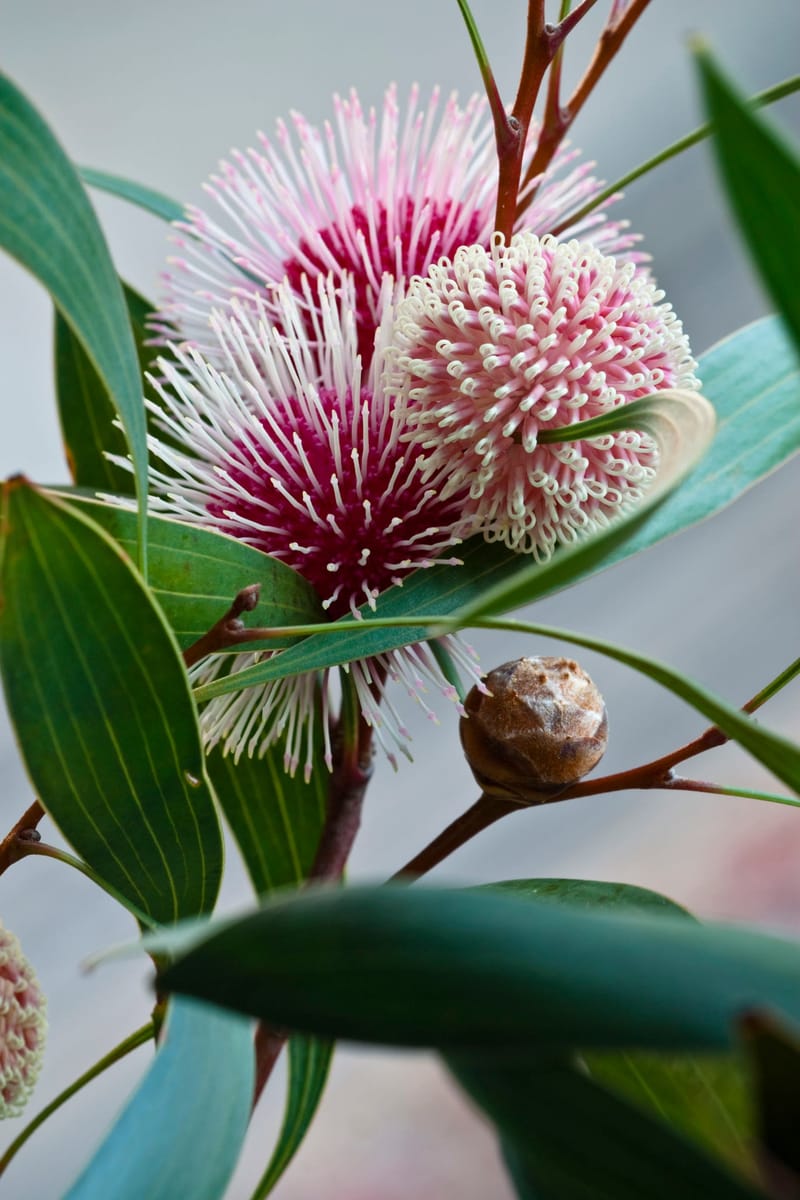
The first notable feature of the Hakea is its bold and handsome foliage, which displays a subtle bluish-green hue. The leaves are simple, shapely, and up to 15 cm long, characterised by their thickness, smoothness, and prominent veins. While they appear slightly blemished with fungal spots at times, their overall appeal is undeniably attractive. The plant assumes an upright shrub form in full sun, boasting a compact, rounded head. This growth habit, along with its well-ripened wood, ensures abundant and even flowering each year. However, when grown in light shade, the shrub becomes more slender and sparse, resulting in reduced flowering.
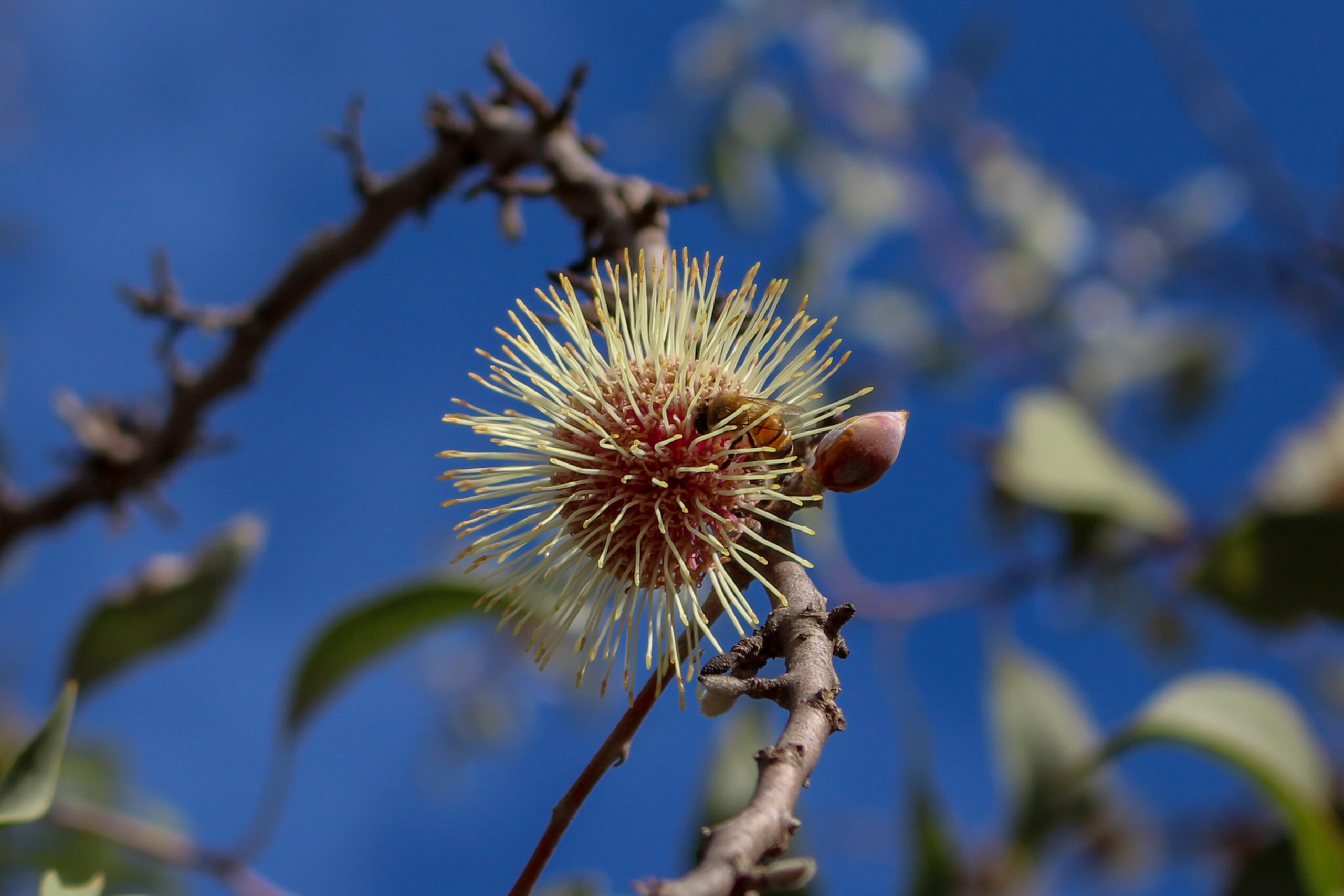
The flowering season for the Hakea is a sight to behold. Budding begins in late summer, and the exquisite flower heads open from late autumn through winter. In a mild winter, the plant reaches its peak flowering period in July. The spherical pin-cushion flower heads, measuring up to 5 cm across, captivate with their soft cardinal or cherry red colour. As the flowers age, the long styles protruding from their centres turn from white to pale pink. A delicate fragrance emanates from the blossoms, attracting the attention of bees and other pollinators.
Hakea laurina has a fascinating relationship with bird pollinators. The flowers produce copious amounts of nectar, attracting nectar-feeding bird species such as honeyeaters and lorikeets. These birds play a vital role in pollination as they visit the flowers, feeding on the nectar and transferring pollen from one flower to another.
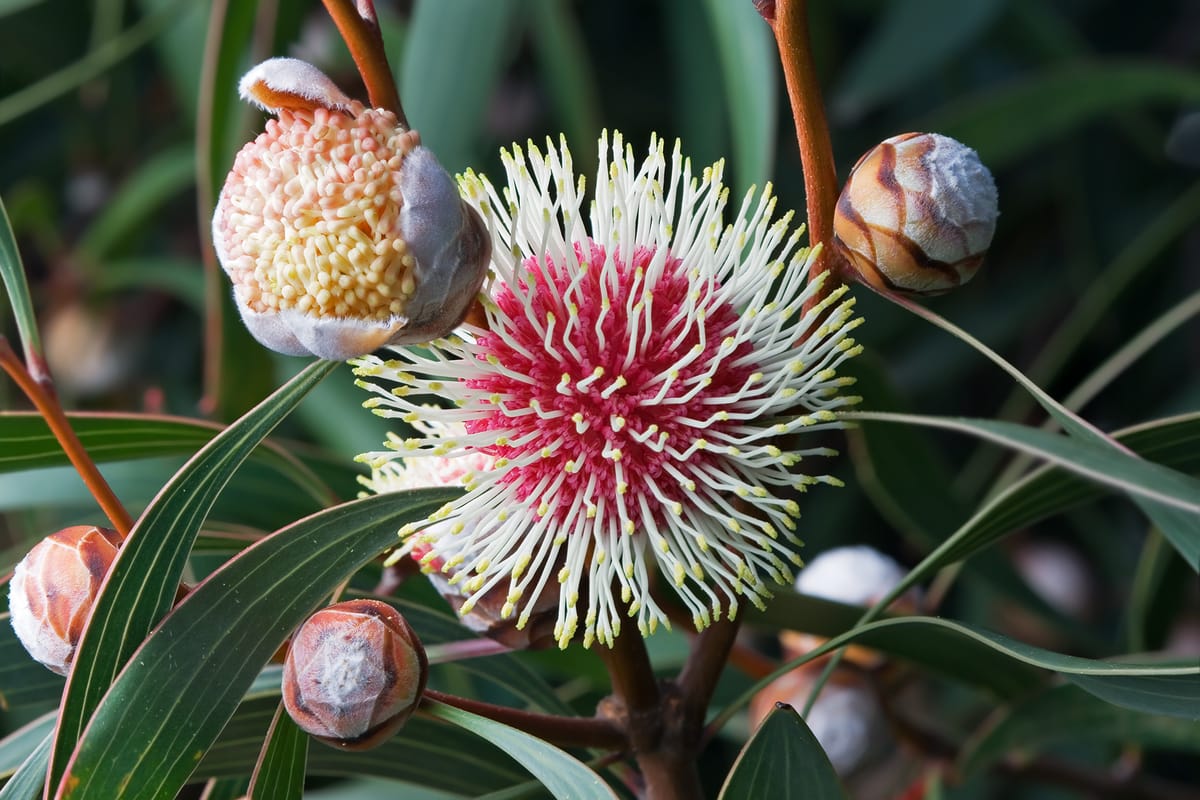
To ensure the best flowering display, Hakea laurina thrives in sunny spots. However, it can tolerate partial shade, although this may result in fewer flowers and a sparser growth habit. The plant exhibits moderate frost tolerance, but new growth during autumn is susceptible to frost damage. As a precaution, young plants can be covered at night until they reach a height of about 1 meter. Hakea's shallow root system makes it vulnerable to windy weather, and staking is advisable to prevent leaning or toppling in exposed positions.
Propagation of the Hakea can be achieved through seeds or by obtaining young plants from native plant nurseries. It is adaptable to various garden soils as long as they are free of lime. Due to its weak root system, staking is recommended, especially for well-grown specimens that can become heavy and prone to leaning. Pruning can be carried out as necessary to shape the plant and promote healthy growth. Additionally, short stems of the exquisite flowers can be cut for indoor decoration, adding a touch of natural elegance to any setting.
Hakea laurina, or Pincushion Hakea, is undoubtedly one of southwestern Australia's most cherished native plants. Its bluish foliage and striking flowers have captured the hearts of enthusiasts not only in its homeland but also abroad, where it is used for street planting and hedging. With its ability to thrive in sunny locations, this plant displays its full splendour during the winter months, adding a vibrant burst of colour to the landscape. Whether in a garden or as a street tree, Hakea laurina, known as kodjet in the Noongar language, remains a testament to the beauty and resilience of Western Australian flora.
Did You Know?
Like many plant species in the Southwest of Australia, Hakea laurina has evolved specific adaptations to survive and even benefit from wildfires. The thick, woody fruits of the Pincushion Hakea contain seeds that are protected by a woody structure that remains closed until stimulated by the heat of a fire. The heat causes the fruits to split open, releasing the seeds onto the ashes and newly cleared ground, where they can germinate and take advantage of the post-fire environment with reduced competition.

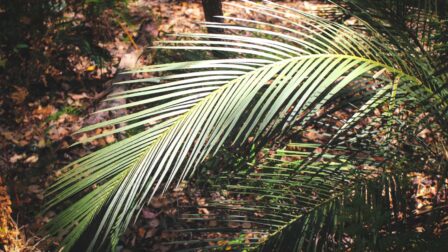
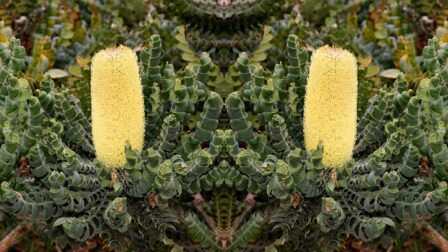
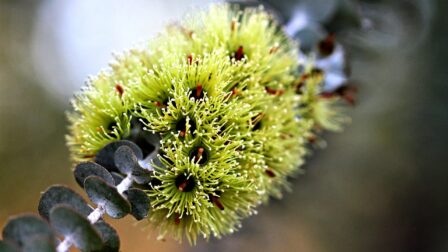
0 comments on “Flora in Focus – Pincushion HakeaA botanical jewel of the southwest”